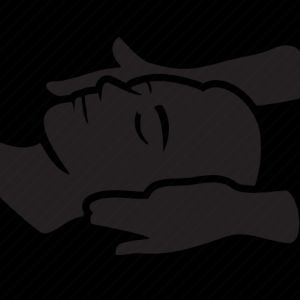Massage Techniques for HomePosted by Spa and Massage on April 24th, 2021 Touch and massage have been universal means of communication that have been used for thousands of years. We naturally touch our bodies when we hurt ourselves, and we touch our loved ones when they hurt us physically or emotionally. By using non-sexual touches to relax or relieve tension during a couple of massages or with another partner, you can use a few simple techniques. The most common type of massage technique taught in this country is the Swedish massage technique. This type of massage involves five main types of strokes that are designed to be choreographed together to fit the entire body in one sitting. Initially, these strokes were created as a form of physical therapy to increase blood flow, increase range of motion, and reduce scar tissue. Body Massage in Al Karama Legends used in traditional Swedish massage: 1) Leakage - long, smooth beats, usually done towards the heart to increase reflux. Leaking is a stroke that is most often associated with a relaxing massage. The blows are long, remember the blow inflicted by the hands, sliding from ankle to thigh, and the relaxing long panties. It is a great technique for flushing the bloodstream and relaxing the whole body. The general rule with the message we teach in our classes is that the slower the movement, the more relaxing, faster, and more stimulating it is. 2) Petri sage - a blow performed with both hands in a C-shape, slightly pulling the muscle away from the bone. Petri sage is the shot you see most often in the upper trapezius muscles, shoulder muscles, and neck. When someone puts their face down, the donor can keep their hands in a C-shape and easily grab this area, which is often very strained by postural stress, sitting at a table, driving, etc. 3) Compression - compression of muscle tissue or the surface below, or the bone on which it rests. The compression can be as gentle or as intense as you want. Someone squeezes muscles and other tissue with their hands on the supporting surface, someone with fists, elbows, or even legs! You can use a compression stroke while sliding or use more static compression to eliminate areas of muscle tension or restriction. 4) Friction - rapid movements, often without cream, to create heat between the hands of the donor and the body part of the recipient to ensure circulation to the surface of the skin. Rubbing is a blow applied when rubbing an area, much like you would warm your hands in cold weather. It increases blood circulation to a certain area and can increase elasticity and tissue healing. 5) Vibration - a small, rapid movement designed to increase the circulation or leaching of interstitial fluid (between tissues). The vibrations can be used in an area too sensitive to other shocks. Sometimes it can be used in places that help reduce swelling by returning fluid to the circulation. The abdomen is an area that this stroke can use to stimulate digestion and fluid movement, for example, early in the postpartum period. Other major methods of working with massage and massage that have become more popular over the past decade include, but not limited to shiatsu, myofascial, neuromuscular, sports, prenatal, Thai (or Thai) yoga, acupressure, and trigger therapy. It is the use of different massage techniques that affect the nervous system in different ways. Most of them cause a relaxation reaction in the body, which counteracts the effects of stress. When the sympathetic nervous system is activated (as opposed to the sympathetic nervous system, which is associated with a fight-or-flight response), the body relaxes, suppresses stress hormones, and releases endorphins. The digestive reflex is triggered, which sometimes causes the abdomen to growl and often causes saliva ... one of the funniest side effects of massage ... is the "rest and digestion" reaction, which indicates that your body is probably out of hyper-anxiety stress, as well as closer to rest and recovery. Here are some reasons why different massage programs can benefit the body in different ways. Applying massage at home can have a positive effect on blood pressure, white blood cell production, body stress levels, and sleep quality, to name a few. Massage Center in Media City To start a home massage practice: make an appointment with a partner, turn off the phone, make sure the room is warm, and allow yourself to fully concentrate on the practice. You will find that in a short time you will breathe more deeply and feel less attached to the stress of the workweek. Like it? Share it!More by this author |


